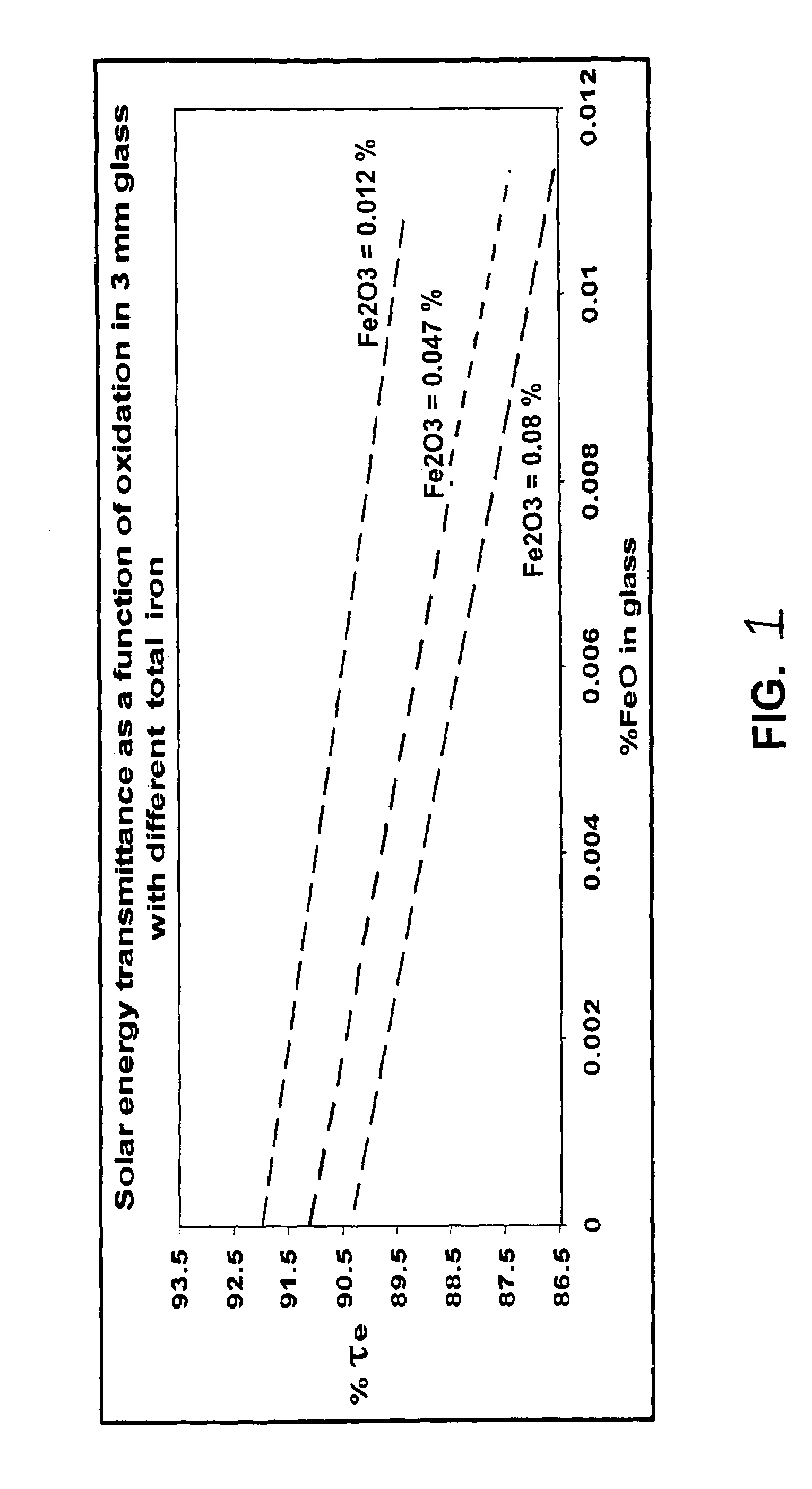Low iron high transmission float glass for solar cell applications and method of making same
a technology of solar cell and float glass, which is applied in the direction of coatings, photovoltaic energy generation, semiconductor devices, etc., can solve the problems of undesired low % ts values of glass substrates in photovoltaic devices, undesirable antimony, and low % ts values in photovoltaic applications
- Summary
- Abstract
- Description
- Claims
- Application Information
AI Technical Summary
Benefits of technology
Problems solved by technology
Method used
Image
Examples
examples 1-5
[0044]Example glasses (e.g., for glass substrate 1) were made and tested according to example embodiments of this invention, as shown in Table 3. In particular, the five right-most columns in Table 3 illustrate the respective compositions and optical characteristics of the glasses of Examples 1-5 of this invention. For purposes of comparison, conventional “Regular clear” and “ExtraClear” glasses and their characteristics are also provided at the left-hand portion of Table 3. It can be seen from Table 3 that the Examples of this invention had improved (i.e., higher) total solar (TS) and reduced % FeO compared to the conventional “Regular clear” and “ExtraClear” glasses. In this regard, note the additional SO3 in the Examples 1-5 compared to the conventional glasses, which indicates the presence of higher quantities of oxidizers in the batch and a higher batch redox, and thus reduced FeO % compared to the conventional glasses. It is noted that Examples 1-5 all had 0% antimony and 0% a...
PUM
| Property | Measurement | Unit |
|---|---|---|
| thickness | aaaaa | aaaaa |
| surface roughness | aaaaa | aaaaa |
| surface roughness | aaaaa | aaaaa |
Abstract
Description
Claims
Application Information
 Login to View More
Login to View More - R&D
- Intellectual Property
- Life Sciences
- Materials
- Tech Scout
- Unparalleled Data Quality
- Higher Quality Content
- 60% Fewer Hallucinations
Browse by: Latest US Patents, China's latest patents, Technical Efficacy Thesaurus, Application Domain, Technology Topic, Popular Technical Reports.
© 2025 PatSnap. All rights reserved.Legal|Privacy policy|Modern Slavery Act Transparency Statement|Sitemap|About US| Contact US: help@patsnap.com


